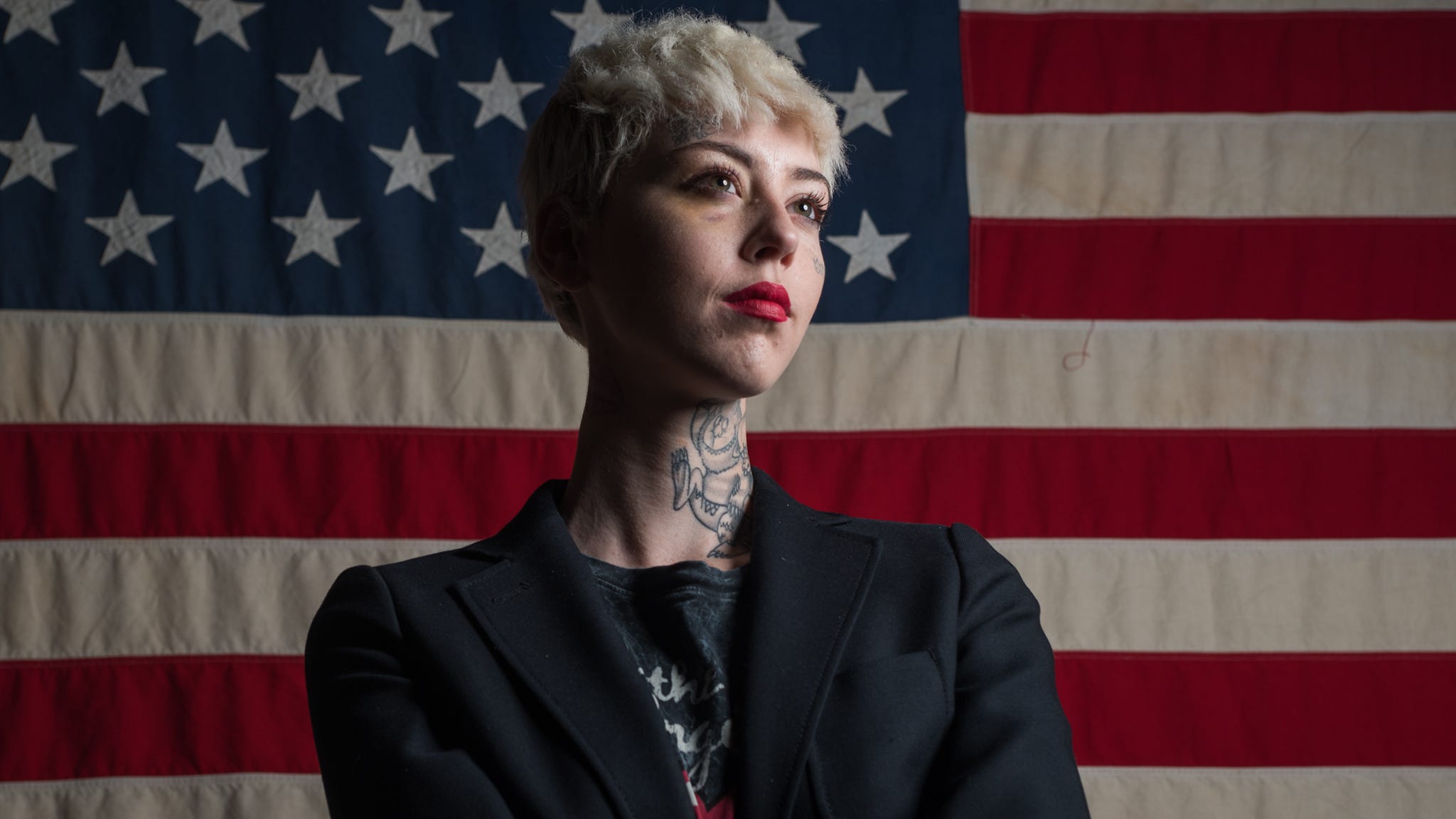The Artist Who Famously Emasculated Trump Is Now Painting With Your Blood
Illma Gore created a global stir with her stunning nude portrait of Donald Trump and his tiny, um...hands? But this outspoken activist isn't finished with the President just yet.

Header photo by Alex Thompson
A little more than a week before the inauguration of President Donald Trump, a slate of people line the hallway outside a Los Angeles apartment, rented for the day on Airbnb. They’ve sacrificed their afternoon to donate blood that won’t go to victims of car accidents or natural disasters, but as paint for Illma Gore. A 24-year-old artist from Brisbane, Australia, Gore is best known for crafting a nude portrait of Trump complete with a penis as small as his ego is fragile.
“I’m sure Airbnb would be absolutely mortified that people are holding underground blood drives on their properties,” Gore says through giggles.
One by one the donors sit timidly on an upholstered couch while a tattooed, certified phlebotomist ties them off and searches for a friendly vein. Their blood travels through clear tubing and into a vial. After the sixty or so donors – Gore included – have each been tapped, the blood is transferred into IV bags and emptied into tiny compartments on…
Keep reading with a 7-day free trial
Subscribe to Narratively to keep reading this post and get 7 days of free access to the full post archives.



